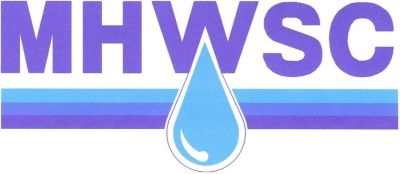How to Diagnose & Fix Leaking Toilets
A leaking toilet can be annoying and wasteful. To check if your toilet has a leak, place a few drops of food coloring in the tank. If coloring is seen in the bowl without flushing, you have a leak. To pinpoint the leak, follow these simple steps:
If the tank is not filling with water, the flush ball is not returning to the seat properly.
Solution:
- Check to see if the linkage that connects to the trip lever is hung up.
- If that doesn't work, then the ball needs to be replaced. A flapper ball can replace a worn flush valve ball.
If the tank is full of water, and water is flowing into the overflow tube, then the valve is not shutting off correctly.
Solution:
- Lift up on the float ball. If the water shuts off, then the ball is not sitting properly in the tank. This could be caused by two things:
- The ball has a leak and is full of water. Replace with another ball or flapper.
- The float ball needs adjusting. Use the screw at the base of the rod to lower the float ball so that the water level is 1/2 to 1 inch below the overflow tube.
If water does not shut off when you lift up on the float ball, then the valve itself needs to be repaired or replaced. Repair kits and new valves with easy to follow instructions are available at local hardware stores.
If the water is not flowing into the overflow tube, but constantly runs or periodically turns on and off, the flush ball or flapper is not fitting snugly into the flush ball seat. When seats get old they get pitted and allow water to leak past the seal and down the drain. Minerals and other deposits may also build up on the seat, making it rough.
Solution:
- If worn, replace the flush ball or flapper.
- If the problem persists, the seat can be cleaned with steel wool, covered with a repair seal or replaced.
Ultra-Low-Flush Toilets
Switching to an ultra-low flush toilet is an effective way to make your home or office more water efficient. Ultra-low flush (ULF) toilets use no more than 1.6 gallons per flush (gpf) rather than 3.5 to 7 gallons of water used by other designs.
That's why new plumbing codes are requiring ULF toilets to be installed in all new construction, bathroom remodels and additions and toilet replacements.
Questions and Answers about ULFs
- What are ultra-low-flush toilets?
ULF toilets look similar to conventional toilets but use a more advanced flushing mechanism. ULFs use only 1.6 gallons per flush (gpf), or less, compared to standard toilets that use 5-7 gpf or "water-conserving" models that use 3.5 gpf.
- Are ULFs more dependable than the 3.5-gpf "water-conserving" models?
ULF toilets have been completely redesigned to go below 3.5 gpf and work more efficiently.
- How much water can I save by switching to a ULF toilet?
A household of four people with a standard five-gallon-per-flush toilet would save approximately 60 gallons per day or about 22,000 gallons per year.
- Do ULF toilets cost more?
As with other toilets, ULFs come in a broad range of prices. Many models are available for about $100 and can run as high as $400 or more for the decorator models.
- Are these toilets available in many colors and styles?
Yes. ULF toilets can be purchased in the same spectrum of decorator colors as conventional toilets. Various styles are available in plain rim, elongated rim, and high handicapped models.
- Do the ULF toilets install like conventional toilets?
Yes. ULF toilets install just like conventional toilets, making them ideal for remodeling and new construction. No special hook-ups or tools are needed.
- Will I ever need to double-flush to wash away waste?
Double-flushing is seldom needed. When it is, two flushes use less water than a conventional toilet uses in one flush. Regarding the flow of waste through sewer pipes, ULFs must meet the same stringent drain line carry requirements as conventional toilets. Also, water from showers, bathtubs, and sinks helps keep your sewer pipes open.
- Do these toilets require more cleaning than conventional toilets?
No. The flushing action washes the bowl quickly and efficiently. Occasionally, toilets with a small water surface (4-inch by 5-inch versus 8-inch by 9-inch) may require slightly more cleaning than other types.
- How do I know if the toilet I'm buying works the best?
New performance standards and testing criteria were released by the American National Standards Institute (ANSI) in December 1990. All ULF toilets have to meet these standards to be listed by the International Association of Plumbing and Mechanical Officials (IAPMO).
How Low-Flush Toilets Work
Ultra-low-flush toilets use an efficient bowl design and increased flushing velocities to remove waste, rather than simply using large amounts of water for flushing.
The Gravity Flush
This technology is also used for conventional toilets. When flushing an ULF toilet, however, the rim wash can come through an open slot rather than through little holes. The bowl may have steep sides and a narrower trap way. These changes to the design of the toilet bowl cause a quick release of water, creating a siphon action to pull the waste out.
The Pressurized Flush
This is a new design developed for 1.6-gpf residential toilets. It uses the house water line pressure to increase the velocity of the water going into the bowl. Within the toilet tank, incoming water presses against a rubber diaphragm that compresses a pocket of air. The water is released by pushing the flush valve.

